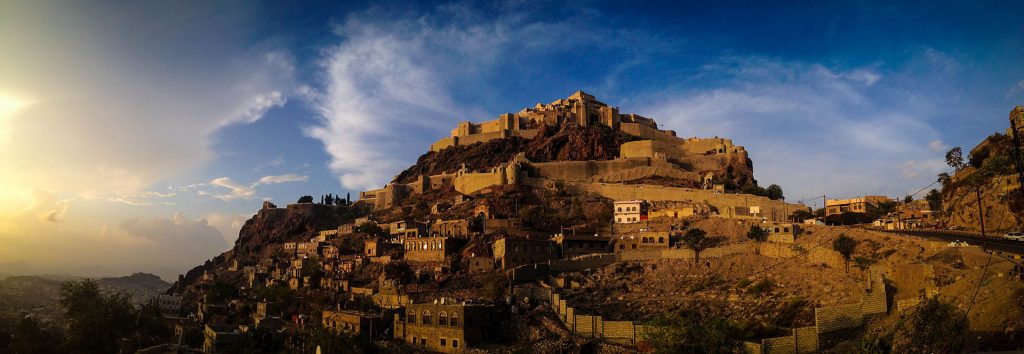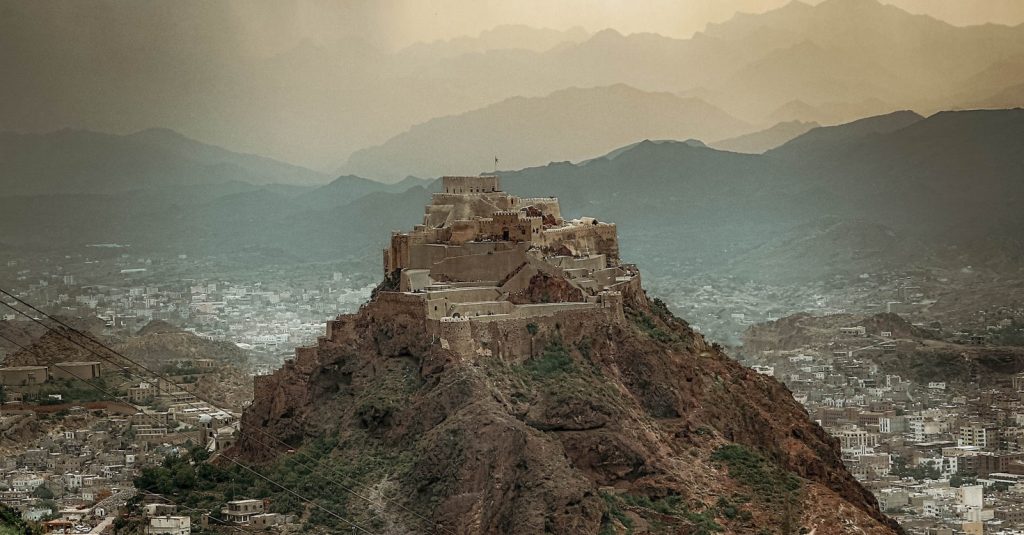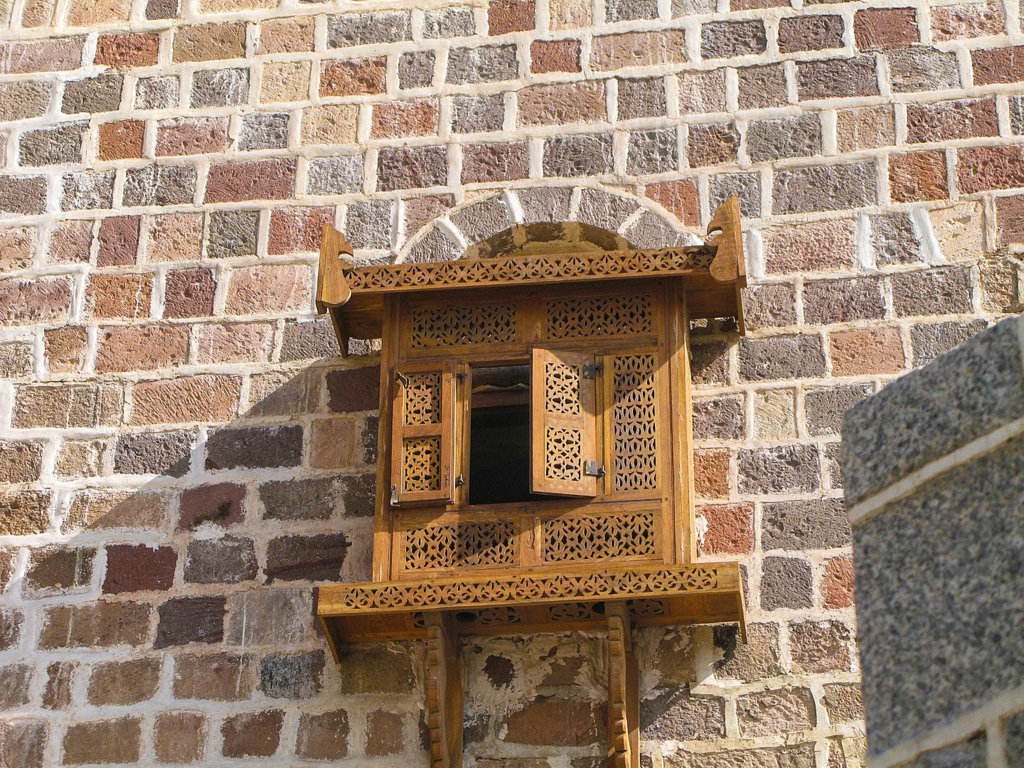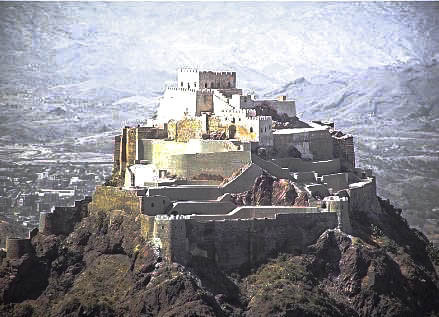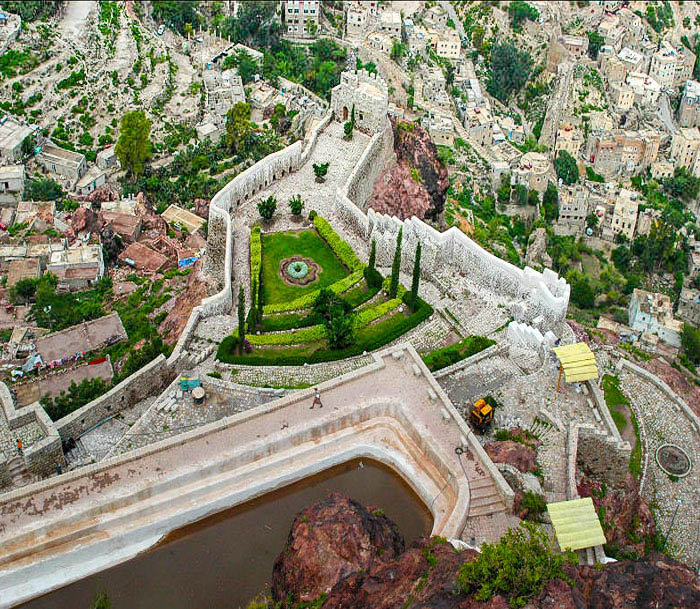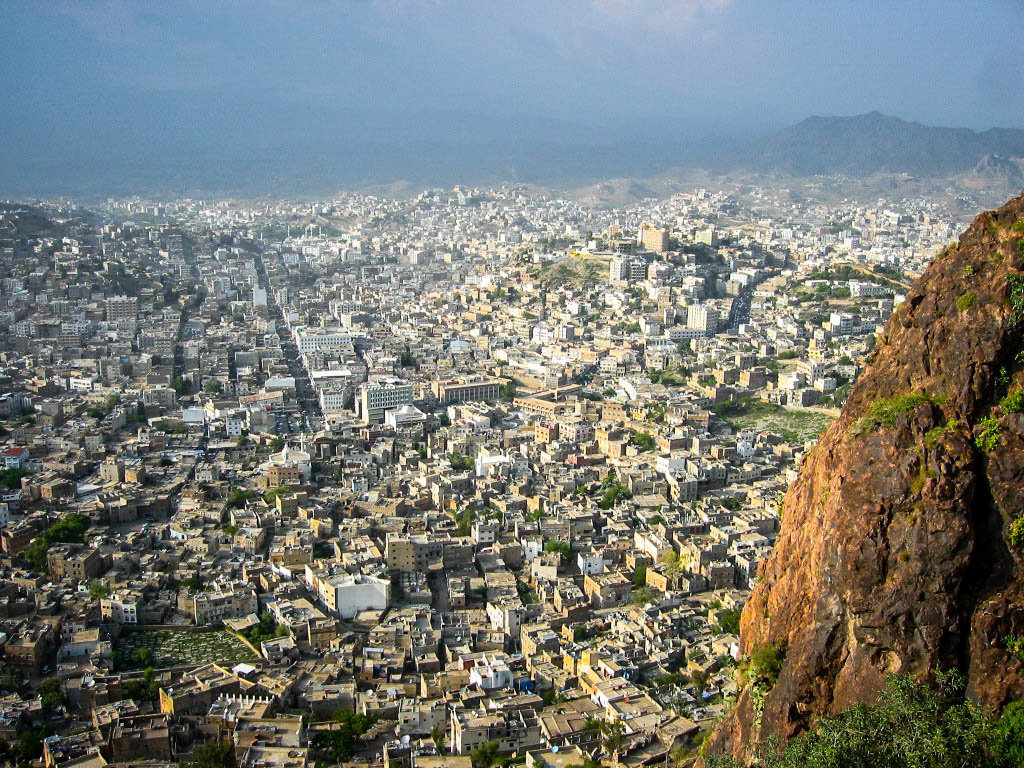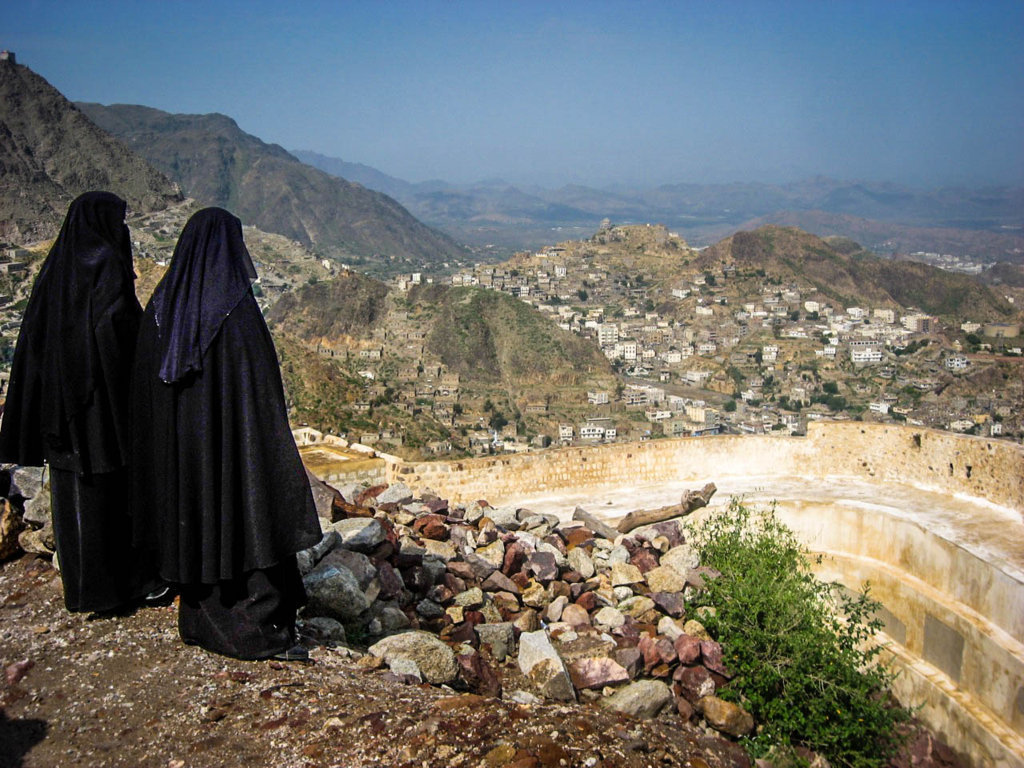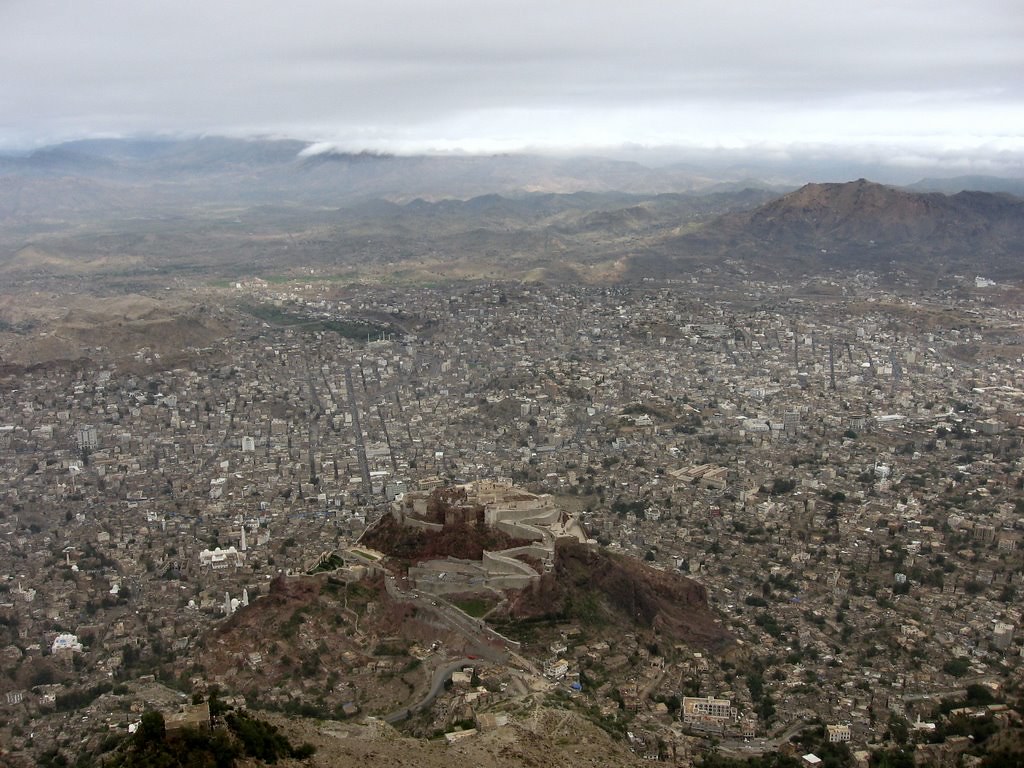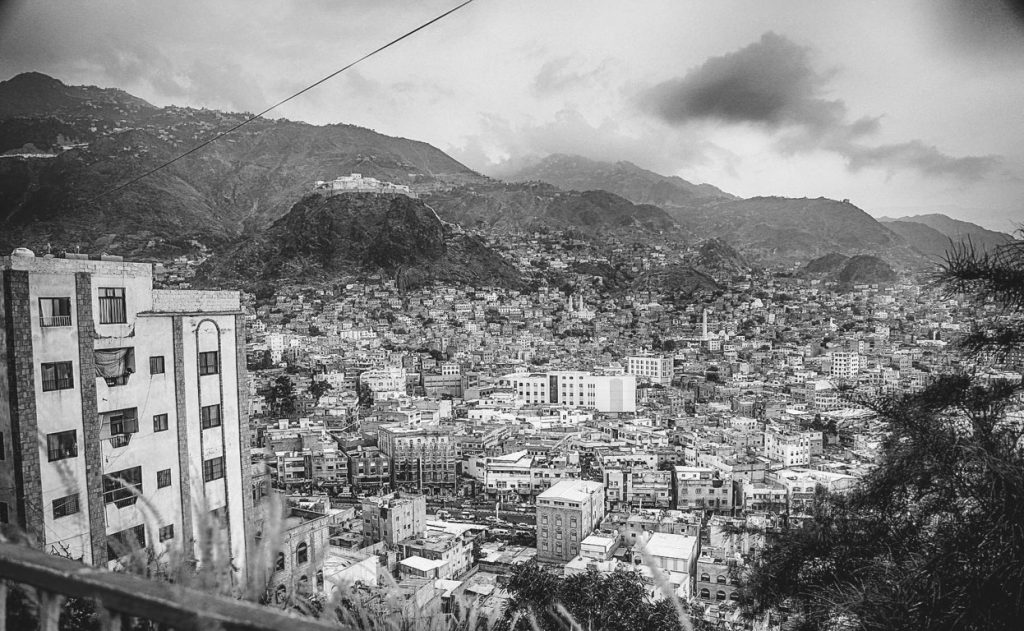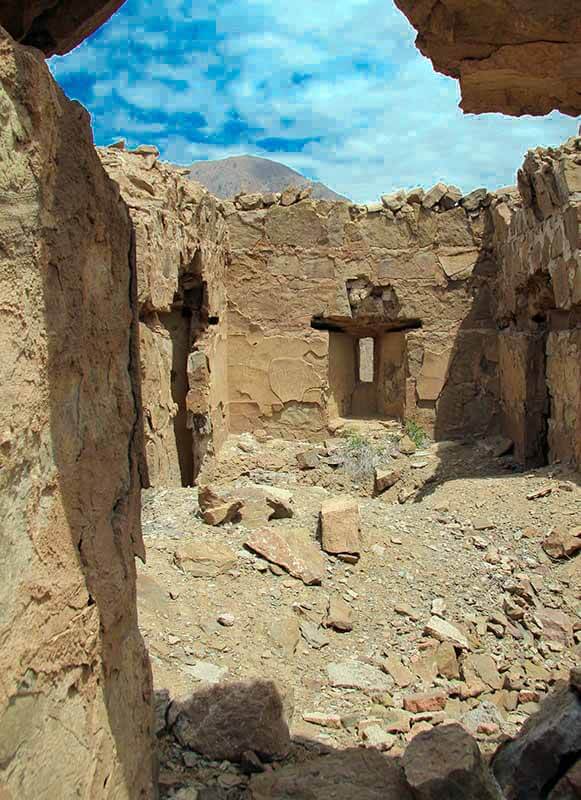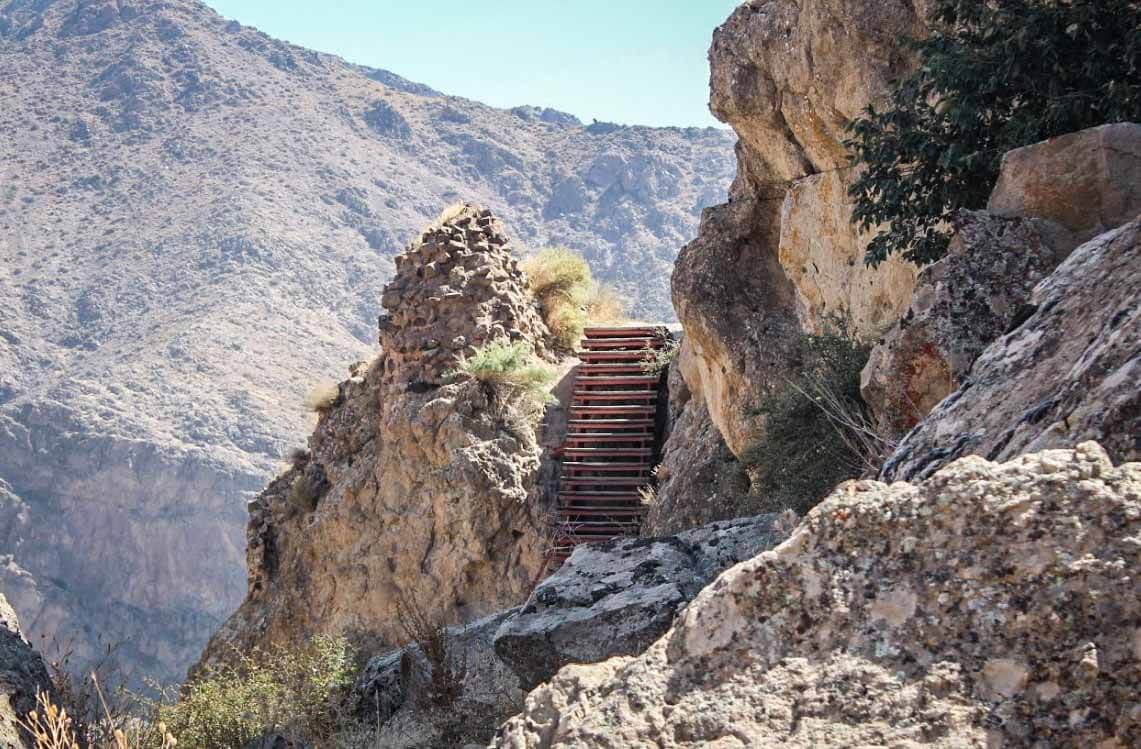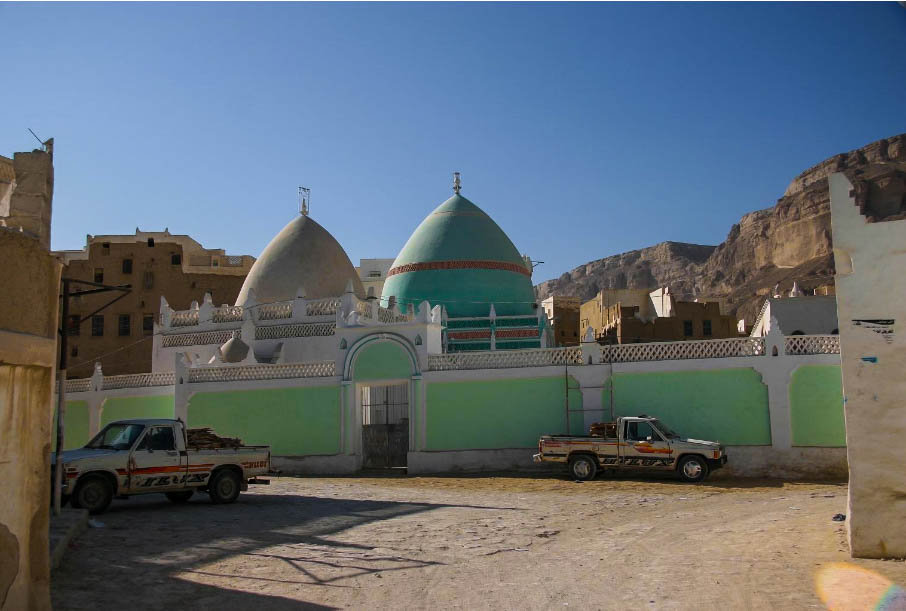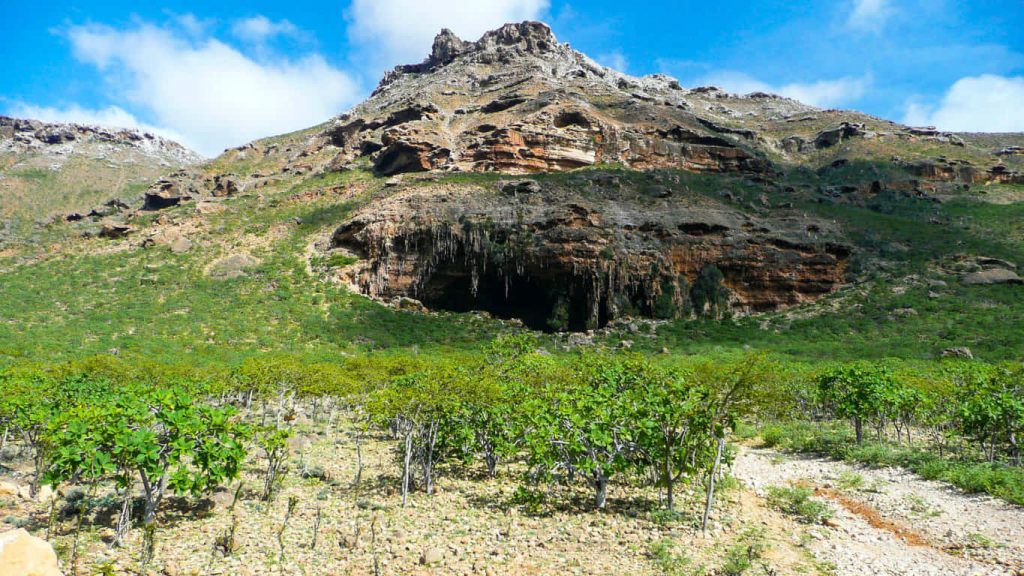Taiz, Yemen
Coordinates: 13.567039, 44.013761
Nearby Places
- Al-Ashrafiyyah Mosque 0.36 Km NW (318°)
- Mudhaffar Mosque 0.59 Km NW (330°)
- Jabal saber 7.07 Km SE (144°)
- Al-Janad Mosque 20.06 Km NE (55°)
Al-Qahira Castle is a historical castle in the ancient city of Taiz, Yemen. It is located on the northern slope of Mount Sabr, which is based on rocky highlands overlooking the city. It is said that the area was initially referred to as the old Taiz, and later renamed as Al-Qahira (Cairo). The castle is considered the nucleus of the city of Taiz. Historians and travelers have described it as a large and beautiful castle with tall towers of beauty and power, among them are Ibn Battuta, Yacout al-Hamwi, Adwar Fikodi, Dutch captain Peterman and many other ancient travelers and historians.
Architecture
The first part, called “Al-Adina”, includes hanging gardens in the form of terraces, built in the mountain slope, a water dam, and basins carved and constructed in one of the mountain fronts, in addition to the palaces that are scattered throughout it surrounded by towers and parks. In this section, there are four palaces are Dar literature. TreeHouse. The House of Justice. The emirate’s house, the last one, belonged to the king to the guesthouse, and it is for receiving guests, not to mention the tunnels that link the palaces outside with secret tunnels and corridors.
The second part of the castle, “The Moroccan Region”, includes several palaces, guard towers, grain stores, and water tanks. As for the fortress of the castle, it is considered one of the essential historical evidence on the history of the city of Taiz, as it was built in the past to contain all the neighborhoods of the old city, which is believed to be established during the era of the Sulayhid state (sixth century AH twelfth century AD). Maids and guardrooms, some of which remain today.
Walls
The castle wall connects with the old wall of Taiz, which had four main gates: Bab al-Kabir, Bab Musa, Bab al-Madjar, and Bab al-Nasr. Above the gate existed a watchtower guarding the city. The main entrance to the castle is located on the south side of the Al-Moayad area. It consists of a madrasa built by the Sultan al-Muayyad in 1281, a small dome, a pond, and the remains of Sultan Al-Muayyed Park. The madrasa has a small sahn, and the park still stands until today.
Destruction
In 2015, during the Yemeni Civil War, the castle was taken over by Houthi rebels and struck by an airstrike of the Saudi-led coalitions afterward. The local outlet stated that the castle was “destroyed”, although the level of destruction remains unclear.
According to a UNESCO report, Al-Qahira Castle was damaged in two separate strikes: on May 10 and May 21, 2015. 30% of the castle was damaged in the second strike.
The castle was later taken over by al-Qaeda-linked Abu Al-Abbas Brigades, who used it as a military barracks. On August 26, 2018, the castle was reported to be under the control of the internationally recognized Yemeni government, who reopened it for visitors after defeating the UAE-backed Abu Al-Abbas Brigades. The castle was closed for four years and was being used as barracks.
Know This
Bathrooms need some repairs as a part of the wall has been fallen because of the war.
Sources
Image Sources
1440px-27_Taizz_(2b)
By Ljuba brank – Own work, CC BY-SA 3.0, https://commons.wikimedia.org/w/index.php?curid=47153826
1440px-27_Taizz_(2a)
By Ljuba brank – Own work, CC BY-SA 3.0, https://commons.wikimedia.org/w/index.php?curid=47153824
1440px-27_Taizz_(1a)
By Ljuba brank – Own work, CC BY-SA 3.0, https://commons.wikimedia.org/w/index.php?curid=47153823
Cairo_Castle_GardenTaiz,Yemen
can
960px-27_Taizz_(2)
By Ljuba brank – Own work, CC BY-SA 3.0, https://commons.wikimedia.org/w/index.php?curid=47153822
3840px-The_castle_above_Taiz_(8683935588)
By Julien Harneis from Sana’a, Yemen – The castle above Taiz, CC BY-SA 2.0, https://commons.wikimedia.org/w/index.php?curid=38033061
1753px-Taiz_(14216440017)_(cropped)
By المصور أنس الحاج – قلعة القاهرة – تعز, CC BY-SA 2.0, https://commons.wikimedia.org/w/index.php?curid=45567887


